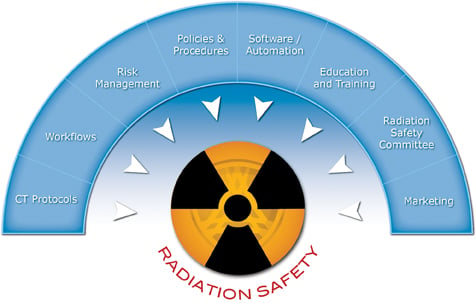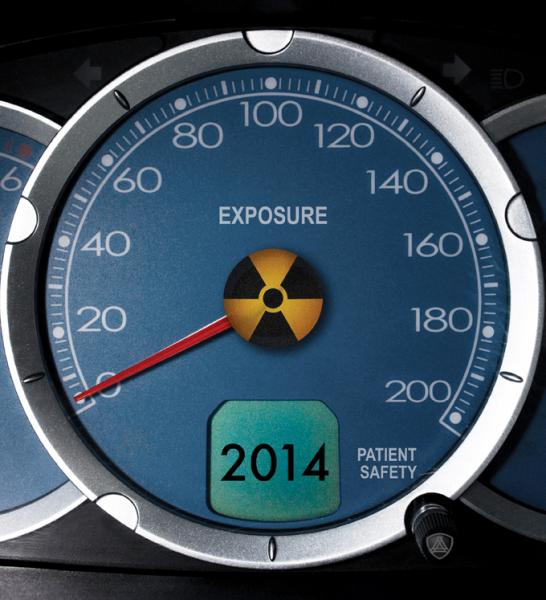
Healthcare providers must constantly review and assess regulations, best imaging processes and the emerging technologies that promise to decrease or eliminate the chance of another sentinel event.
Patient radiation dose safety has become the latest buzzword. With the emerging regulations and mandates, technologies and best practices, the radiation safety information pool has become convoluted with disparate and conflicting information. With numerous opinions and interpretations on radiation safety trends, best practices, regulation updates and studies, healthcare providers as well as the general public are experiencing difficulties filtering the true message in managing patient radiation dose away from the industry noise. Healthcare providers are constantly reviewing and assessing regulations, best imaging processes and the emerging technologies — including automated dose management systems and dose management computed tomography (CT) devices — promising to decrease or eliminate the chance of another sentinel event.
Healthcare providers, who are solely dependent on an automated software system managing their entire radiation safety program, must understand a good radiation safety program is multifaceted and will not be sufficed with just a piece of technology. Regardless of the implementation of automated radiation dose management systems and devices, a healthcare provider’s radiation safety program must include well-established and continuous CT imaging protocol management for adult and pediatric patients. This includes ongoing training/education for all staff members, incident risk management planning, advanced workflows including order decision support, imaging policies and procedures, patient education and communication, and methods in messaging and marketing the program to the community, perhaps even the industry. Patient radiation dose safety has again gained regulatory interest; the Joint Commission released its 2014 standards for diagnostic imaging, the Journal of the American College of Radiology (JACR) has released a case study on the risk of using the CT dose index (CTDI) and data loss prevention (DLP) as aggregate patient dose management guidelines, and Congress passed H.R. 4302, the Protecting Access to Medicare Act, delaying the sustainable growth rate (SGR) calculations and including radiation safety measures for reimbursements.
Diagnostic Imaging Requirements
There are numerous articles reviewing the 2014 Joint Commission standards for diagnostic imaging; however, there is still confusion on the interpretation of some of the standards. Many articles confuse the reader by incorporating magnetic resonance imaging (MRI) standards with radiation safety guidelines. Here, we will simply focus on CT or ionizing imaging practices. The facts are these:
•By July 1, 2015, all individuals performing CT procedures must be American Registry of Radiological Technologists (ARRT) or Nuclear Medicine Technology Certification Board (NMTCB) registered.
•Healthcare providers must have a robust internal radiation safety program, which includes a strong ongoing education/training component powered by Image Gently and Image Wisely.
•Healthcare providers who provide CT imaging services must report the patient’s radiation dose (CTDI and DLP) information in the diagnostic imaging report as well as make it part of the patient’s medical record.
•For the elements of performance, healthcare providers must have adult and pediatric CT imaging protocols benchmarked and reviewed annually by a physicist.
•ACR and American Association for Physicists in Medicine (AAPM) benchmarks are recommended, but not enforced.
The Joint Commission did not state radiologic technologists must be registered in CT. The 2014 standards, however, require providers to manage the CT device’s CTDI and DLP radiation dose output. The CTDI and DLP dose values do not reflect the true effective dose or size-specific dose estimate(s) (SSDE) for the patient. Healthcare providers seeking effective dose or SSDE values must incorporate the patient body mass index (BMI) and habitus, and other imaging technique variables, calculated and validated by a medical physicist. Many organizations believe their program does not need a routine intervention by the medical physicist. This belief is not recommended and will not result in a solid internal radiation safety program.
Good radiation safety programs must contain the essential components (proactive workflows, risk management, policies and procedures, standardizing CT protocols, education and marketing) and a strong internal team, which must include the medical physicist, chief radiologist, imaging director, lead technologists, risk management and a physician champion.
Dose Is Not Always What It Seems
Recently, the Journal of American College of Radiology (JACR) conducted and released a case study on the accuracy of using CTDI and DLP dose values as an effective method for monitoring patient radiation dose.1 The study was conducted after a concerned parent of a patient requested the CT dose information from the pre- and post-procedure CT scans. The dose information was given to the parent without calculating the data (true effective or SSDE calculations were not calculated), and without proper instructions or education on the dose information. The parent’s concern triggered an advanced investigation into the incident and the two different dose outputs received from the procedures performed on two different vendors’ scanners. Because the two studies of the same patient and body part were performed on two different CT devices (different manufacturers using two different phantom sizes for dose output calculations), the two scans produced two very different CTDI and DLP values. The JACR study concludes the sole reference to CTDI and DLP dose values, without true calculation of SSDE or effective dose, are not effective or accurate methods in managing a patient’s radiation dose.
The case study confirmed the importance of establishing a robust internal patient radiation safety program, which is a combination of people, process and technology. CTDI and DLP dose values are nowhere near close to the effective radiation dose received by the patient. The device and dose calibration to phantom size only controls the CT device radiation dose output based on a specified phantom size (16 or 32 cm). The phantom size for patient dose management does not take into account key calculation factors such as weight, body habitus and composition, or tube angle, which would determine the true effective dose.
The recent awareness of radiation dose safety brought forward automated radiation dose management technologies claiming to minimize or even eliminate another sentinel event or radiation overexposure. That may be true; however, these automated solutions do not assist healthcare providers with flawless tools in managing the patient’s aggregate effective dose. Accurately managing patients’ radiation dose is a combination of the right people (physicists, technologists, radiologists, risk management), the right processes (dose calculation, CT protocol management, risk management, informed decision support, patient and staff education), and the right technology (updated CT devices with low-dose technology, order entry management decision support, automated dose management solution). Healthcare providers must not solely depend on an automated solution to manage its entire radiation dose safety program.
The JACR’s case study confirmed what physicists knew and feared from the beginning, and has placed the imaging community back to the starting point in developing a robust internal radiation safety program with the right components.
The Protecting Access to Medicare Act
In the government’s effort to delay the activation of the sustainable growth rate (SGR) and the 24 percent cut to Medicare reimbursement associated with the initiative, Congress recently passed the H.R. 4302. The bill delays the SGR by 12 months and includes additional requirements for imaging healthcare providers on radiation safety:
•Ordering physician decision support for advanced imaging procedures;
•Improved and stricter patient radiation dose safety controls and levels; and
•CT equipment must meet the National Electrical Manufacturer Association (NEMA) standards.
Supported by the American College of Radiology (ACR), H.R. 4302 reinforces radiation safety standards for organizations dependent on Medicare reimbursement.
Patient radiation dose safety will continue to gain traction in the industry. The regulatory entities will continue to refine the standards until they strike a balance of people, process and technology defining a radiation dose program. Healthcare providers must proactively move ahead of the emerging trends and regulations in developing a codified, sustainable and comprehensive internal patient radiation safety program using the right people, processes and technology.
Neil Singh is a senior consultant at Ascendian Healthcare Consulting and a frequent speaker and published contributor on the subject of enterprise dose management and tracking.
References:
1. Seibert J, Boone J, Wootton-Gorges S, and Lamba R. “Dose Is Not Always What It Seems: Where Very Misleading Values Can Result From Volume CT Dose Index and Dose Length Product.” Journal of the American College of Radiology. 2014; 11(3): 233-237. www.jacr.org/article/S1546-1440(13)00663-7/fulltext. Accessed Aug. 26, 2014.
2. The American College of Radiology. “House of Representatives Passes 12-Month SGR Patch; Numerous ACR Supported Imaging Provisions Included in Legislation. 2014.” www.acr.org/Advocacy/eNews/20140328-Issue/House-of-Representatives-Pass…. Accessed May 13, 2014. Accessed Aug. 26, 2014.
3. The Joint Commission. Prepublication — Diagnostic Imaging Services Requirements. 2013. www.jointcommission.org/standards_information/prepublication_standards…. Accessed Aug. 26, 2014.



 December 11, 2025
December 11, 2025 









